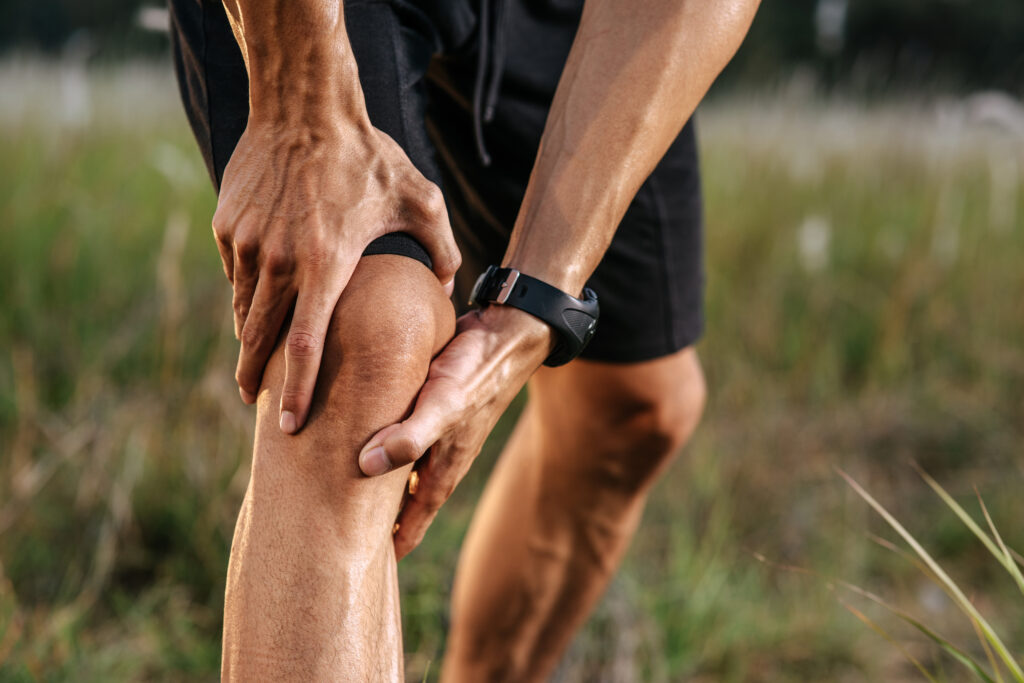You know that recovery is just as essential as training when it comes to maximizing your athletic performance. By understanding and implementing a few key strategies, you can greatly speed up your recovery process. From active recovery techniques to the importance of sleep and nutrition, each element plays a critical role in how quickly your body bounces back. But what specific methods can you adopt to guarantee you're not just recovering, but recovering at peak efficiency? Let's explore these seven strategies that could redefine your approach to recovery.
Active Recovery Techniques
Active recovery techniques are essential for athletes looking to enhance their performance and speed up recovery. These methods focus on low-intensity activities that promote blood flow and reduce muscle soreness, allowing your body to heal while still staying active. Incorporating active recovery into your routine can help you bounce back faster after intense training sessions or competitions.
One effective technique is light aerobic exercise. Activities like walking, cycling, or swimming at a low intensity can help keep your muscles engaged without putting too much strain on them. Aim for 20 to 30 minutes of this type of exercise, which can also elevate your mood and help clear your mind.
Another valuable method is dynamic stretching. Instead of static stretches that hold your muscles in one position, try movements that mimic the activity you're recovering from. This keeps your joints flexible while promoting circulation, aiding in recovery. Think leg swings or arm circles, which warm up your body and prepare it for further activity.
Foam rolling is also an excellent addition to your routine. By using a foam roller, you can target tight areas in your muscles, breaking down knots and improving flexibility. Spend a few minutes each day rolling out major muscle groups.
Lastly, consider yoga or tai chi. These practices combine gentle movement with breathing techniques, helping you relax while enhancing flexibility and strength.
Importance of Sleep
While staying physically active is essential for recovery, don't overlook the role of sleep in your overall performance and healing process. Sleep is your body's natural way of repairing itself, and it plays a vital role in muscle recovery, cognitive function, and emotional well-being.
When you sleep, your body releases growth hormones that help repair tissues and build muscle. If you skimp on sleep, you're not just compromising your recovery; you're also risking injuries and decreased performance.
You might think you can power through with caffeine and adrenaline, but that's a temporary fix. Lack of sleep can lead to decreased focus, slower reaction times, and impaired decision-making. You want to be at your best when it's game time, and sufficient sleep is key to achieving that. Aim for 7 to 9 hours of quality sleep each night to allow your body to recover properly.
Creating a sleep-friendly environment can make a significant difference. Keep your bedroom dark, cool, and quiet. Establish a bedtime routine that signals your body it's time to wind down.
Avoid screens an hour before sleep, as the blue light can interfere with your body's natural sleep-wake cycle. Incorporate naps if needed; short power naps can boost your alertness and performance.
Nutrition for Optimal Recovery
To recover effectively, you need to pay close attention to your nutrition.
Hydration plays an essential role in your recovery process, while timing your protein intake can greatly impact muscle repair.
Don't forget about the importance of micronutrients, as they help your body bounce back stronger.
Hydration's Crucial Role
Hydration plays an important role in your recovery process, influencing everything from muscle repair to overall performance. When you're well-hydrated, your body can efficiently transport nutrients to your muscles, helping them recover faster after intense workouts.
Dehydration, on the other hand, can lead to fatigue, cramping, and longer recovery times, which can hinder your progress.
To optimize your hydration, aim to drink water consistently throughout the day, not just during or after exercise. Consider your sweat rate, workout intensity, and environmental conditions. If you're sweating heavily, you might need to replenish electrolytes along with water.
Sports drinks can be beneficial in these cases, but be mindful of sugar content.
Incorporating hydrating foods into your diet, like fruits and vegetables, can also help maintain your fluid balance. Watermelon, cucumbers, and oranges are excellent choices.
Listen to your body; if you're feeling thirsty, that's a sign you've already lost fluids.
Prioritize hydration as a crucial component of your recovery strategy. By doing so, you'll enhance your performance and guarantee your body bounces back stronger and quicker, ready for the next challenge.
Protein Timing Importance
Understanding the timing of protein intake can greatly impact your recovery and overall performance as an athlete. Consuming protein at strategic moments helps repair muscle tissue and replenish energy stores, which is essential for ideal recovery.
Aim to consume protein soon after your workouts, ideally within the first 30 minutes. This window is vital because your muscles are primed to absorb nutrients, promoting faster recovery.
Additionally, consider spacing out your protein intake throughout the day to maintain a steady supply of amino acids, supporting muscle growth and repair.
Here are some key points to remember about protein timing:
- Post-Workout: Focus on having a protein-rich snack or meal within 30 minutes after exercising.
- Even Distribution: Spread your protein intake evenly across meals to maximize muscle recovery.
- Combine with Carbs: Pair protein with carbohydrates post-exercise to enhance glycogen replenishment and recovery rates.
Micronutrients for Recovery
Micronutrients play an essential role in your recovery process as an athlete. These vitamins and minerals, though needed in smaller amounts, can greatly impact your performance and healing. For instance, vitamin C is important for collagen production, which supports tissue repair, while vitamin D helps regulate calcium, essential for bone health.
Incorporating a variety of colorful fruits and vegetables into your diet guarantees you're getting a broad spectrum of essential micronutrients. Spinach, kale, and bell peppers are excellent sources that can boost your immune system and reduce inflammation.
Additionally, minerals like magnesium and zinc play a considerable role in muscle function and recovery, so don't overlook foods like nuts, seeds, and whole grains.
Hydration is also key; electrolytes such as sodium, potassium, and calcium are crucial for muscle recovery and overall performance. When you sweat, you lose these minerals, so replenishing them through food or electrolyte drinks can help you recover faster.
Focusing on these micronutrients can enhance your recovery process, allowing you to get back to training stronger and healthier. Prioritize a balanced diet rich in these essential nutrients, and you'll notice the difference in your recovery times.
Hydration Strategies
Staying properly hydrated is essential for athletes looking to enhance performance and expedite recovery. Dehydration can lead to decreased endurance, increased fatigue, and longer recovery times. To maintain ideal hydration, you need to adopt effective hydration strategies before, during, and after your workouts.
First, assess your hydration levels. A simple way to monitor this is by checking the color of your urine. Light yellow usually indicates proper hydration, while darker shades suggest you need to drink more fluids.
Next, consider your fluid intake based on your activity level, climate, and body weight. You might find it helpful to follow these strategies:
- Pre-hydration: Drink water or electrolyte-rich beverages before workouts to prepare your body.
- Intra-workout hydration: Consume fluids during exercise, especially if you're working out for longer than an hour.
- Post-workout recovery: Replenish lost fluids and electrolytes after exercise by drinking water or sports drinks.
Make it a habit to carry a water bottle with you throughout the day. This way, you'll be more likely to sip on fluids regularly, ensuring you stay hydrated.
Massage and Manual Therapy
Massage and manual therapy can greatly enhance your recovery process, offering numerous benefits for athletes. These techniques help alleviate muscle tension, reduce soreness, and improve circulation, all of which are essential for ideal performance. When you incorporate massage into your routine, you're not just treating your muscles; you're also promoting relaxation, which is fundamental for mental recovery.
During a massage, the therapist applies pressure to specific areas of your body, targeting knots and tightness that can impede your movement. This not only helps you feel better physically but also mentally. You'll find that reduced muscle tension can lead to improved focus and motivation, enabling you to train harder and recover faster.
Manual therapy, which includes techniques like joint mobilization and manipulation, can also play a significant role in your recovery. It helps restore proper joint function and alignment, preventing injuries that can arise from imbalances in your body. By improving your range of motion, manual therapy enables you to perform exercises more effectively and safely.
Regular sessions can help you stay ahead of potential issues, making it easier to maintain your training schedule.
Whether you're a weekend warrior or a professional athlete, incorporating massage and manual therapy into your recovery plan can lead to better overall performance. Don't underestimate the power of touch; it's an important component in your journey toward peak athletic performance.
Cold and Heat Therapy
After addressing muscle tension through massage and manual therapy, it's time to explore another effective recovery method: cold and heat therapy. This approach can greatly enhance your recovery process by targeting inflammation and promoting blood flow.
Cold therapy, often referred to as cryotherapy, works by constricting blood vessels and reducing swelling. It's ideal after intense workouts or injuries. You can use ice packs, cold compresses, or even take a cold shower to reap these benefits.
On the other hand, heat therapy relaxes muscles and increases blood circulation, making it perfect for relieving stiffness or chronic pain. You might find relief using heating pads, warm towels, or soaking in a hot bath.
When you incorporate both cold and heat therapy into your routine, you can optimize your recovery. Here are some key points to keep in mind:
- Timing: Use cold therapy immediately after strenuous activity to minimize swelling, while heat therapy is best used before workouts to loosen muscles.
- Duration: Limit cold applications to about 15-20 minutes at a time, and heat therapy can be applied for longer, generally up to 30 minutes.
- Listen to Your Body: Pay attention to how your body responds. If something doesn't feel right, adjust the temperatures or duration accordingly.
Mindfulness and Mental Recovery
Many athletes overlook the mental aspect of recovery, but it's just as essential as physical healing. Your mind plays a vital role in how you bounce back from intense training or injuries. Practicing mindfulness can help you tap into that mental strength, allowing you to recover more effectively.
Mindfulness involves being present and fully engaged in the moment, which can reduce stress and anxiety. When you're able to focus on the here and now, you're less likely to dwell on past performances or worry about future competitions. Try incorporating mindfulness techniques like deep breathing, meditation, or visualization into your routine. These practices can help calm your racing thoughts, enabling you to better manage the pressures of competition and recovery.
Additionally, mental recovery isn't just about relaxation; it's also about mental resilience. Embrace positive self-talk and affirmations to build confidence and reinforce a growth mindset. When you believe in your ability to recover and improve, you're setting the stage for better outcomes.
Another powerful tool is journaling. Writing down your thoughts and experiences can provide clarity and help you process emotions tied to your performance and recovery. It can also serve as a reminder of your progress and achievements.
Incorporating mindfulness into your recovery strategy not only boosts mental health but also enhances your physical performance. By giving equal attention to your mind and body, you'll find a more balanced approach to recovery, ultimately leading to greater success in your athletic endeavors.
Conclusion
Incorporating these seven recovery strategies can greatly enhance your performance and well-being. By engaging in active recovery, prioritizing sleep, fueling your body with the right nutrition, staying hydrated, and utilizing therapies like massage and temperature treatments, you'll set yourself up for success. Don't forget to include mindfulness practices to manage stress. By caring for your body and mind, you'll not only recover faster but also elevate your athletic performance to new heights.



